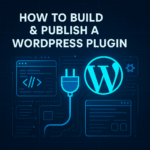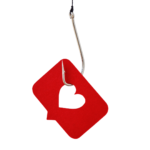Backlinks have been, and remain, one of the most important ways to rank highly in search results. However, not all links are created equal, so we take a look at the best link building strategies for modern SEO:
SEO Basics: The Simple SEO Guide for Website Owners [UPDATED]
Along with great content, links are the fundamental basis on which SEO rankings are built under Google’s search algorithm. However, since Google introduced the Penguin Spam Filter in 2012, many web developers chose to ignore link building in favour of on-page SEO.
Editor’s Note [17.02.25]: Our 2017 guide titled “Top 10 Tips for Building High-Quality Links in 2017” was in need of some much-needed love and refinement. As well as a general tidy-up, we’ve integrated other useful articles and guides for further reading and have made sure all of the advice still holds true today.
What are backlinks
- 1 What are backlinks
- 2 Old ways of working
- 3 Good link building vs bad link building
- 4 Successful link building strategies
-
5
Our 10 link building strategies
- 5.1 1. If you don’t ask, you don’t get
- 5.2 2. Be a good guest
- 5.3 3. Use the power of social media
- 5.4 4. Check out the competition
- 5.5 5. Produce shareable content
- 5.6 6. Recycle your content
- 5.7 7. Hit the business directories
- 5.8 8. It’s all about the anchor text
- 5.9 9. Do some housework
- 5.10 10. Grab some of the (Wiki) action
- 6 Final thoughts on the best strategies for building high-quality backlinks
The fact you are here means you probably already know the answer to this question.
Our simplest explanation is this – when any other website links back to yours, they are giving you a backlink.
For a more in-depth explanation, read our guide below.
Old ways of working
Prior to Penguin, rankings could be manipulated by purchasing links and tweaking these to boost rankings.
Google’s first attempt to combat this practice resulted in periodic crawls whereby sites deemed to be manipulating its search algorithm were penalised. Sites could be blacklisted for years despite improvements or changes, as Penguin only ran intermittently.
The result has been an understandable reluctance to use backlinks and a shift towards content. However, the update of the Penguin system in Q3-2016 making it real-time has made building links less risky as a way of developing a site’s ranking; in short, the sword of Damocles just got less threatening.
Good link building vs bad link building
So, what made Google change its algorithm with the introduction of Penguin and just what are the good and bad ways of link building?
Also known as White Hat SEO and Black Hat SEO, the intended goal for both strategies is to optimise a site so that it ranks highly in the results of a search engine for specific keywords. However, there is a huge difference between the two.
Understanding the Difference Between Black Hat SEO Techniques, White Hat & Grey Hat [UPDATED]
Fundamentally, a White Hat SEO strategy is built around producing quality content and providing their website users with information, tools and links that are relevant to what they are looking for; it is geared towards a human audience.
Conversely, Black Hat SEO revolves around the manipulation of a site’s content and links built specifically to force higher rankings with search engines. The result of this approach is a patchy and often disappointing experience for users because the site is built for search engines and not people.
![Black hat seo linkbuilding - best link building strategies: top 10 tips for building high-quality backlinks [updated] Avoid black hat linkbuilding techniques](https://opace.agency/wp-content/uploads/2017/03/black_hat_seo_linkbuilding.jpg)
Avoid Black Hat Linkbuilding techniques and optimise for real people not search engines. Image credit Thomas Leuthard via Flickr.
Successful link building strategies
Reciprocal link building
Mutual linking isn’t a bad way to build links but can be abused. If you are exchanging ‘links for links’ with too many partners, particularly if these are with sites that are not a good match for your content, then this can have a negative impact. Instead, you should focus on compatible sites that have great content, are well-regarded with Google and offer a positive enhancement to your site’s core offering.
Earning links
By producing high-quality content, whether this is an authoritative article, an exclusive interview or a well-presented piece of new research, you will become a source of ‘go-to’ content and people will link to your site.
Converting engagement to links
Some sites receive an extraordinary amount of engagement in the form of mentions. Finding these and asking for them to be converted to backlinks is a proactive part of your link building strategy.
Investing time (not money) in link building
Paying for links breaches Google’s guidelines and is an unethical way to boost the number of backlinks that your site has. Not only can these backlinks be of poor quality and harm the user experience of your site but can also earn you a penalty with Google.
If you want to invest in link building then invest your time and creative energy. Your money is far better spent paying for high-quality content that can be used creatively to earn backlinks.
Our 10 link building strategies
1. If you don’t ask, you don’t get
It’s still one of the simplest ways to start out with link building and, for beginners, can be a very successful way to boost rankings.
Think about the network of contacts that you have who own or manage their own website and consider whether linking with their site would be a positive thing. This could be suppliers, colleagues or even friends and family. If you don’t have the right contacts yet, then researching and building relationships with other webmasters could be time well spent.
Whoever you are considering a link with, always make sure that the link enhances the experience for users and isn’t just a case of stuffing a piece of content with irrelevant links. Not only could doing so negatively impact your Google ranking but is potentially a turn-off for your users.
Using a tool such as the Link Research SEO Toolbar will help you determine whether the domain you are linking with is a trustworthy, quality one.
2. Be a good guest
Writing a guest post for a quality website that is relevant to your own is a great example of quality link building. This only works if the post is well written, informative and professional. A poorly written article can do just as much harm as good to your reputation.
If you find a high-quality site that is prepared to backlink with you in return for a guest post then consider whether you could make regular contributions.
It’s not only government, educational institutes and major publisher’s websites that rank highly with Google as authoritative sources; social media also pass authority without much trouble.
Whilst links from Facebook, Twitter, Instagram and all the rest may not be as significant as getting a link from an international news channel like the BBC or a government website, they are easier to achieve. Again, focus on a White Hat approach and make your links relevant.
![Social media for good linkbuilding - best link building strategies: top 10 tips for building high-quality backlinks [updated] Good quality linkbuilding](https://opace.agency/wp-content/uploads/2017/03/social_media_for_good_linkbuilding-1024x550.jpg)
Don’t underestimate the power of social media for good quality link building. Image credit TeroVesalainen via Pixabay.
4. Check out the competition
You can use free tools such as Moz’s Link Explorer to find out just what kind of backlinks your competitors are using and how well these are ranked in terms of search engine authority. If you find that several sites in your niche have the same backlinks then you should investigate whether you can achieve the same ones.
There are paid versions of these tools which give you greater levels of detail
As we said in the introduction, investing in high-quality content is far more productive and is a positive link building strategy.
This doesn’t have to be a flat or wordy article but could be a more creative piece.
Think about the shareability of things like infographics, lists and videos. In fact, some of the most shared content is research based so think about ways to produce case studies, reviews and research papers and make your links relevant.
6. Recycle your content
In a world where one of the biggest buzzwords is upcycling, don’t ignore the ways in which you can creatively market an existing piece of content.
If an article was particularly successful for you as a written document, then consider how you could turn it into a podcast. Maybe a well-received webinar could be converted into a series of guides. Remember that you don’t have to reinvent the wheel and that one size doesn’t fit all.
A campaign of research papers could reach new audiences by becoming standalone infographics without having to produce new content. These would also be far more likely to be shared on social media.
![Recycle content for linkbuilding - best link building strategies: top 10 tips for building high-quality backlinks [updated] Apply the four r’s to your content](https://opace.agency/wp-content/uploads/2017/03/recycle_content_for_linkbuilding.jpg)
Apply the four R’s to your content to make each piece work harder. Image credit Bill Smith via Flickr.
7. Hit the business directories
Just as all links aren’t created equal, not all directories are either. The days of adding your site to any old web directory are long gone.
It pays to find those niche business directories that are relevant to the content of your site. ‘Bucket’ directories are a no-no and are actually ignored by Google and other search engines.
Instead, take the time to research those directories that your target audience are likely to find you on and get linked there.
8. It’s all about the anchor text
When using links in a piece of content, the anchor text is all important. These shouldn’t be prolific, repetitious or overly commercial.
Instead, they should provide a preview of the kind of relevant content that you are providing with your link. For example, if your site provides a free valuation service for jewellery then avoid:
For insurance purposes, it is important to know the value of diamond rings, gold earrings and jewellery. Getting a free valuation is easy with ABCDiamonds.
This kind of anchoring is far from natural and is over-optimised. Instead of twenty links like this, it’s far more useful to create one powerful navigational phrase to anchor your link to instead:
Insurance companies need to know the value of your jewellery before they can calculate a premium for your policy.
![- best link building strategies: top 10 tips for building high-quality backlinks [updated] Make your anchor text more natural](https://opace.agency/wp-content/uploads/2017/03/linkbuilding_strategies_natural_anchor_text.jpg)
Make your anchor text more natural. Image credit Binary Koala via Flickr
9. Do some housework
As vital as it is to have good link building strategies, it’s equally as important to ensure that you clean up any bad links. Keeping your site in order and routinely cleaning up those links which could have a negative impact on your rankings is crucial.
You can use a free backlink reporting tool to perform a check to provide you with detailed information their quality.
Focusing on links that are over-optimised (see tip #8), of poor quality or irrelevant you can ask webmasters to remove these.
Whilst this works in some instances, sometimes you may need more drastic action. You may find that certain pages of your site have attracted more bad backlinks than others and it may be worthwhile (in the long run) to remove these.
Alternatively, if certain links are proving problematic then you can have these disavowed within the Google Search Console.
You should be aware that this could reduce your traffic in the short term but should prove an effective way to improve quality rankings in the long term.
![Clean up old and broken links - best link building strategies: top 10 tips for building high-quality backlinks [updated] Clean up your old and broken links](https://opace.agency/wp-content/uploads/2017/03/Clean_up_old_and_broken_links.jpg)
Clean up your old and broken links to keep your site optimised. Image credit Hernán Piñera via Flickr.
10. Grab some of the (Wiki) action
Websites like Wikipedia rank highly as trustworthy sources for search engines like Google.
The site is created by users and provides a wealth of free information much of which is linked to by other sites. Therefore getting a mention or backlink on Wikipedia is a valuable one and you don’t have to write extensively on a subject to be able to achieve it. Plenty of existing articles have dead or broken links as well as require citation.
WikiGrabber is a free tool that allows you to search the site for these opportunities based on your selected keywords. The rest is simply a case of selectively choosing to update those links with relevant and strong content from your own site.
Final thoughts on the best strategies for building high-quality backlinks
The approach to building high-quality backlinks changes all the time.
If there’s one piece of advice we can give, it’s this – sometimes the best link building is no link building at all.
Don’t focus on quick wins like buying links; instead, focus on your overall SEO and marketing strategy and build content that your visitors will value. If visitors value your content, they are likely to use, mention or share what you have done. This way, your site will earn relevant backlinks without you even knowing.
Ensuring that your strategy is working its hardest, is all about keeping on top of SEO and understanding what your visitors want.
For further reading on the topic, explore our link building guide below.
Backlink Your Way to SEO Success: An Up-To-Date Link Building Guide [UPDATED]
For tips to get free backlinks, check out our article here.
How to Get Free Backlinks for Your Website: Our Top 10 Methods [UPDATED]
Opace provides its clients with expert SEO services and technical help with link building strategies, so if you would like to discuss your SEO strategy needs, then you can get in touch with us today or by email at [email protected].
Want to comment on any of this advice? We’d love to hear from you. Know someone who might benefit from a few of these tips? Why not share this article using the links below? Have requests for areas you’d like to know more about? Drop us an email and request a feature piece on something you think needs more explanation.
Main image credit J.D. Page via Flickr.





0 Comments